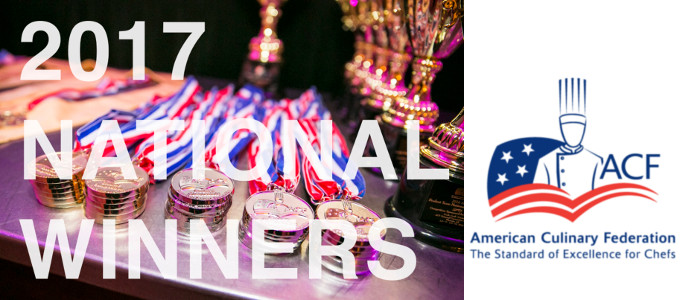Let’s Talk Grocery Shopping: Simplifying Your Vegan Experience
We understand that not everyone enjoys grocery shopping. It can be stressful, time-consuming, and expensive if you don’t have a plan. Without a list and an idea of what to eat for the week, the grocery store can feel like a never-ending maze.
Creating the Perfect Vegan Shopping List: Food & Beverage Magazine
Now, let’s add another layer: being vegan. Finding vegan products can be challenging, even though they are more accessible now than before. However, with successful vegan grocery shopping, you can avoid relying solely on fast food or having the same meal every night. Planning your meals, having the necessary vegetables on hand, and approaching the situation wisely can save you time and money.
Having a vegan grocery checklist can keep you on track, especially if you’re new to the vegan lifestyle. It helps you avoid common pitfalls and stay committed to your vegan diet. Planning ahead gives you an advantage.
Lastly, creating an all-vegan grocery list can dispel the misconception that being vegan means only eating greens and broccoli. It shows that a vegan diet is not restrictive and can be incredibly satisfying.
With a little planning and understanding, grocery shopping, including vegan grocery shopping, can be a breeze. Our guide will help you create a comprehensive vegan grocery list, provide tips on maximizing it, making meal plans, sticking to your budget, and enjoying the grocery shopping experience.
Making a Perfect Vegan Shopping List
A vegan grocery list ought to include everything you’d typically consume, such as grains, nuts, veggies, and fruits, but within the restrictions of a vegan diet. This is similar to creating a grocery list if one were an omnivore. In other words, you wouldn’t include any food items that contain or use animal products. That includes foods made from animals or that are regarded as animal byproducts, such as honey, in addition to the obvious ones like pork chops, ground beef, and chicken breast.
Making a note of the ingredients you require whenever you visit a grocery store is one method to start a vegan grocery list. If you plan a meal, this is a terrific strategy because you can allow the dishes you’ve selected for the week to drive your list. To reduce the quantity of possible wasted food your household produces, all you ought to do is list the items you need. Additionally, it will stop you from purchasing anything you don’t need, ultimately resulting in financial savings.
There are also several online layouts that include typical vegan-friendly dishes. This grocery list format is one that we greatly enjoy. Simply write what components you need on your list of supplies, and utilize it as a reference when you’re at the grocery store. Vegans should use pre-made templates because making such a list could take some time. Regarding this, you might want to give Home Chef a try before anyone else since they have an outstanding food kit delivery service alongside a selection of dishes, diet plans, and simple recipes. includes vegans!
What Can’t Vegans Eat?
Vegans don’t eat certain foods, although some vegetarians do still eat eggs, cheese, and other dairy products. Vegans adhere to a rigorous diet and refrain from consuming any animal stuff, whether they are actual animal goods or animal byproducts. In addition to meat and its byproducts (such as lard), seafood, poultry, gelatin, eggs/egg powder, dairy cheeses, dairy milk, lactose, butter and ghee, honey, and shellac are some foods that vegans avoid.
Apart from the obvious offenders, there are a variety of delectable vegan meat substitutes that we enjoy occasionally. But moderation is key in all situations. While we appreciate the abundance of plant-based options and the growing number of new businesses that are introducing vegan cuisine to the public, fresh foods like fruits, vegetables, and plant-based proteins ought to always be preferred over processed ones.
We advise giving nutrient-dense foods top priority when buying vegan goods so that you may make sure your body is receiving every mineral and vitamin it requires to perform at its best. Trust us when we advise that having a vegan grocery plan makes it much simpler to make sure you’re getting your vitamins!
One more tip for making a vegan shopping list: always read labels. Unfortunately, some businesses are able to incorporate animal proteins and byproducts into otherwise vegan-friendly food products. Vegan food products frequently have labels that emphasize their suitability for vegans. Depending on the product, the label may read “vegan-friendly”, “certified vegan”, or “contains no animal ingredients”. Some foods may also bear the PETA logo, which verifies that they are suitable for vegans to consume. Labels that list possible allergies, such as those for seafood, are the opposite of that.
Animal byproducts or products are occasionally a little less visible. Casein (made from egg whites and used as a supplement), carmine (used as a colorant), gelatin (made from animal skin, tendons, ligaments, and bones), lactose (a sugar found in milk), and mono- and di-glycerides (derived from animal fats) are some ingredients to watch out for. Any of these elements on a food item’s label indicates that it’s not suitable for vegans.
Another ingredient that’s frequently seen in food products is whey powder. Regrettably, because whey protein is a mix of proteins that were originally taken out of whey, which is the liquid part of milk, animal-based goods are used in their production.
Exercise enthusiasts and people trying to lose weight typically use whey as a meal substitute or to supplement their protein consumption. Thankfully, there are a ton of excellent vegan whey powders available right now. Isinglass is a component to keep an eye out for if you prefer to drink alcohol. This animal product, which is a clarifying ingredient used in beer and winemaking production, is made from fish bladders. Even though isinglass has no flavor and may be difficult to find, most breweries and wineries indicate their ingredients, and isinglass is no longer frequently used.
Vegan Shopping List
We’ve compiled a detailed list of food categories and specific instances of what vegans are eating so that you can see what foods they do eat. Before you start making your vegan grocery list, there are a few matters you might want to keep in mind. Think of these as your vegan diet goals.
These consist of:
● Purchase fresh produce, especially leafy greens.
● Oats, rice, and potatoes are examples of complex carbohydrates to be included.
● Always read the labels.
● Choose whole grains.
● For convenience, fill your freezer with frozen vegetables and fruits.
● When you feel like having a snack, choose something healthier, such as dark chocolate.
Keeping those goals in mind, in this instance are a few things you might want to add to your vegan shopping list…
We’ve talked about this previously, but simply because a person doesn’t consume meat products does not put them at a higher risk of having insufficient protein. You’ll be sure to receive an adequate amount in your body if you consume a balanced diet.
Having said that, finding a good protein that’s also vegan-friendly may be more challenging, especially if you’re new to this way of eating. Let’s give you examples of some of our favorite plant-based proteins…
Seeds and nuts are a terrific way to add protein to any meal or snack since they are savory, adaptable, and filled with protein. Given that there are countless distinct types of nuts and seeds, the options are endless.
● Brazil nuts
● Almonds
● Chia seeds
● Cashews
● Hazelnuts
● Flaxseed
● Pecans
● Macadamia nuts
● Pumpkin seeds
● Pine nuts
● Sunflower seeds
● Walnuts
● Sesame seeds
Quinoa is a grain in the traditional sense of the word, but it also has a high level of protein and is a complete protein.
Quinoa, which is also high in other nutrients, can be consumed as a morning food or as a lunch or dinner main dish.
Seitan
For individuals who follow a plant-based diet, seitan, commonly referred to as wheat gluten or wheat meat, is a well-liked source of protein. When cooked, it has the appearance and consistency of meat while being made of gluten.
Seitan is a really rich source of protein because it has roughly 25 grams of protein/100 grams. In addition to iron, calcium, and phosphorus, it is also rich in selenium. Naturally, those who have celiac disease or a sensitivity to gluten should stay away from seitan because it is made with gluten.
Soy-based Goods
Protein-rich soy products like tempeh and edamame and tofu are also available. Remember that the way the soy product is prepared will affect the protein content.
For instance, 12 cups of edamame beans have 8.5 grams of protein while 12 cups of tempeh have about 15 grams.
Beans/Legumes
Beans are a lot more than a source of protein.
In addition, beans are a fantastic source of folate, iron, manganese, phosphorus, and potassium. According to studies, diets high in beans have been shown to lower blood pressure, regulate blood sugar levels, and lower cholesterol.
● Black-eyed peas
● Black beans
● Chickpeas
● Cannellini beans
● Kidney beans
● Fava beans
● Lima beans
● Lentils
● Peanuts
● Mung beans
● Split peas
● Pinto beans
● Peas
Veggies
There would, of course, be veggies. Do you believe you can get away from them? We’re confident that as you stay on your vegan diet, you’ll come to appreciate the flexibility of veggies and develop a similar passion for them as we have.
There are plenty of interesting vegetables you can try; this isn’t a complete list! Our faves are:
● Beets
● Asparagus
● Cruciferous vegetables
⮚ Brussels sprouts
⮚ Broccoli
⮚ Cauliflower
⮚ Cabbage
● Celery
● Carrots
● Cucumber
● Eggplant
● Corn
● Onions
● Mushrooms
● Peppers
● Parsnips
● Pumpkin
● Potatoes
● Spinach
● Radish
● Squash
● Sweet potato
● Yam
● Zucchini
● Tomatoes
● Leafy Greens: Eat your greens, as your mother advised, and she was correct. Through vitamins A, B, C, E, and K, dark leafy greens constitute a stronghold of nutrients that are going to keep you healthy. They also contain fiber, antioxidants, anti-cancer properties, iron, magnesium, and calcium.
⮚ Collard greens
⮚ Arugula
⮚ Lettuce
⮚ Kale
⮚ Swiss chard
⮚ Spinach
Fruits
Nature’s sweets! Fruits are tasty, guilt-free, and, of course, fully vegan. They are also nutrient-dense and rich in flavor. Know which fruits are higher in fructose (such as mangoes), which means you should consume them in small amounts, and which kinds are lower in fructose (such as berries), as you can’t undergo a vegan diet without them.
● Avocados
● Apple
● Blackberries
● Bananas
● Cantaloupe
● Blueberries
● Figs
● Cherries
● Guava
● Grapefruit
● Lemon
● Jackfruit
● Mangoes
● Lime
● Papaya
● Oranges
● Pears
● Peaches
● Pineapple
● Plums
● Strawberries
● Watermelon
● Raspberries
Fats/Oils
The mere fact that you can no longer use butter doesn’t spell the closure of your gastronomic explorations. Butter substitutes made from plant-based, vegan-friendly fats and oils are excellent choices. It’s important to constantly bear in mind that distinct oils smoke at different phases, and certain oils are better suited to specific cooking methods than others.
● Avocado oil
● Almond oil
● Coconut oil
● Canola oil
● Grapeseed oil
● Coconut butter
● Sesame oil
● Olive oil
Grains
Although all grains are suitable for vegans, a balanced diet ought to contain complex carbohydrates. Complex carbohydrates are more effective energy sources and can enhance intestinal health. When shopping for food, choose whole-grain and high-fiber products.
● Barley
● Amaranth
● Bulgar
● Buckwheat
● Couscous
● Cornmeal
● Freekeh
● Farro
● Millet
● Kamut
● Orzo
● Rice
● Oats
● Sorghum
● Rye
● Wheat berries
● Whole-wheat flour
● Spelt
Spices
Spices and herbs are essential in vegan cuisine. Spices and herbs enhance the overall taste of your food while also increasing its nutritional worth. The following herbs and spices taste delicious both fresh and dried.
● Chives
● Basil
● Cinnamon
● Cilantro
● Cumin
● Chili powder
● Ginger
● Dill
● Oregano
● Nutmeg
● Parsley
● Paprika
● Tarragon
● Thyme
● Turmeric
● Rosemary
We also really enjoy the hot sauce, but remember you review the label because some of it contains components that aren’t suitable for vegans.
Non-Perishables
It’s a fantastic idea to keep canned foods on hand to keep you “alive” on those sporadic days when you might be lacking in groceries but you don’t have the time to purchase them. Canned versions of common grocery goods, like chickpeas, are significantly simpler to prepare.
Although canned goods have a bad reputation, fruits and vegetables in cans (and frozen ones, as well) are preserved at the height of ripeness.
Snacks
We advised staying healthy rather than torturing yourself. Everything should be done in moderation, as we previously stated, but it doesn’t mean you shouldn’t occasionally have “fun”. Do you have a craving for Oreos? That’s absolutely ok! Additionally, there are many plant-based ice creams and chips available that don’t sacrifice flavor. Also, don’t overlook dried fruit. You’re aware that nature’s candy has dried up. They’re a better choice than candy but bear in mind that fruit can nevertheless contain a lot of sugar.
Enjoy yourself, then. As long as you like your snacks in moderation, you’re free to keep your snack cabinet stocked.
Is a Plant-Based Diet Expensive?
Your food price will greatly vary depending on a variety of things when following any diet. As an example, how many individuals reside in your household? Is your entire family vegan, or will you need to buy food for those on different diets? How much food do you want? Do you enjoy shopping in posh supermarkets? You see what we mean.
Your plant-based diet may be as inexpensive or as expensive as you prefer. If you just consume meat substitutes, your food budget may be considerably higher than if you only consumed fresh produce, vegan-friendly proteins, and nutritious grains. The costs of your meals will ultimately depend on the parameters mentioned above.
Conclusion
Making a vegan grocery list is a fantastic way to stay organized and avoid making impulsive purchases of food that might wind up going to waste. When you shop hungry, this is very likely to happen. You’re far more inclined to shop idly when you plan vegan meals, which will help you save money.
As was previously mentioned, choosing dishes using identical ingredients will help you use up the food you purchase. By doing this, you’ll be sure to avoid spending more money than necessary in addition to being more assured that you won’t be wasting as much food since you’ll be cooking it all yourself!







